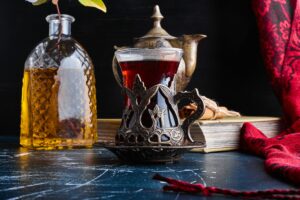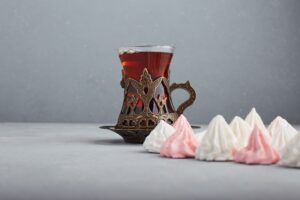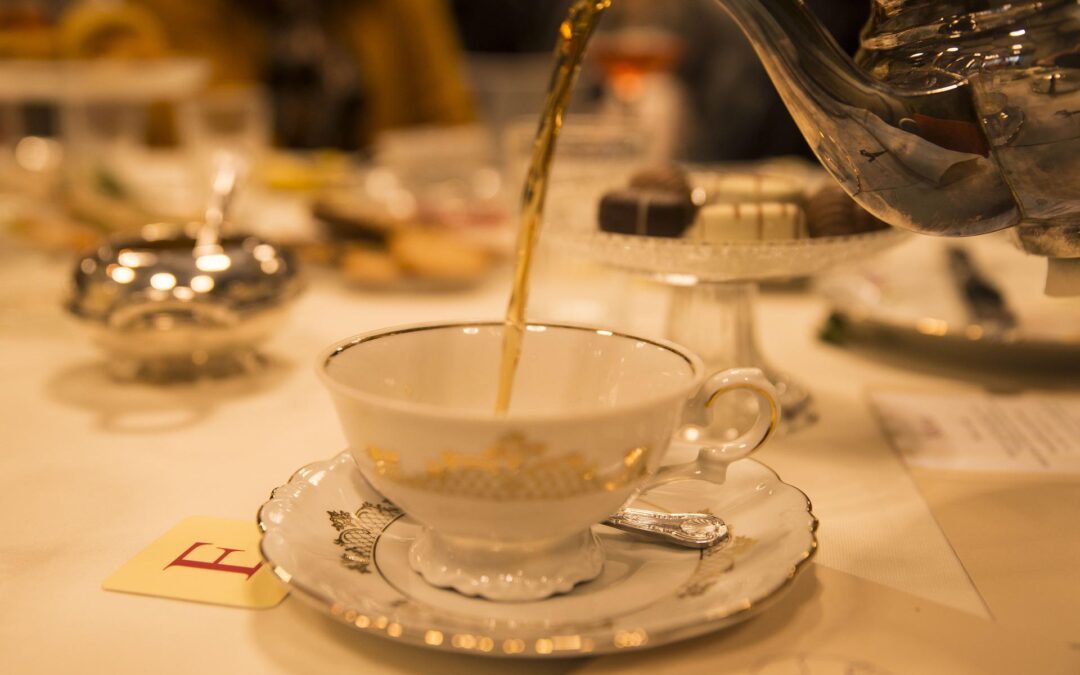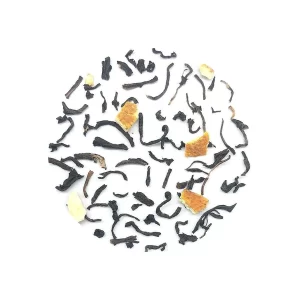Earl Grey tea: Why it is so hyped?
Just like a brownie goes with vanilla ice cream, a burger with fries, and lime goes with tequila, bergamot goes with black tea to create one of the world’s most beloved teas: Earl Grey.
Earl Grey tea, not being the parent category of teas, falls into the category of flavoured teas. Flavored teas include any type of tea—white, green, oolong, or black. Teas that have been scented or flavoured with fruit, flowers, spices, oils, extracts, and natural or artificial flavors.
One of the most well-known flavoured teas in the world is Earl Grey. This very British tea normally has a black tea base and is flavoured with bergamot orange peel oil. It is a citrus fruit with characteristics similar to those of an orange and a lemon, with a hint of grapefruit and lime.
Have a look at this popular breakfast tea.
Kinds of tea for making Earl Grey Tea
Black tea leaves are used as the foundation for the traditional Earl Grey tea. Yet, the type of black tea utilised might range from Ceylon to African to Indian.
 Black teas from several countries might be combined or come from a single estate. Black tea flavours range from deep and malty to sweet and flowery. It entirely depends on the tea plant’s terroir (the qualities of the location, climate, and culture) and the tea master’s method of processing.
Black teas from several countries might be combined or come from a single estate. Black tea flavours range from deep and malty to sweet and flowery. It entirely depends on the tea plant’s terroir (the qualities of the location, climate, and culture) and the tea master’s method of processing.
Amount of bergamot used:
The type and quantity of bergamot used in a particular Earl Grey mix will depend on the art and style of the tea master. A tea master may choose to add a little quantity of bergamot flavour depending on the taste of the base tea. It is to preserve the delicate flavour of the tea leaves. Or a tea master can choose to add a strong dose of bergamot to a strong, sharp black tea to help it stand up to the strong taste profile of the tea leaves.
Black Tea Processing: Withering → Rolling → Oxidation → Firing
After withering, we immediately roll our black tea to hurry the oxidation process. The rich colour and flavour of the leaves are the result of full oxidation before drying.
Tasting Earl Grey
So how did England and the rest of the world come to fall in love with this citrus and floral infused black tea?
The flavour profile of bergamot combines sweetness, florality, sourness, and bitterness. And it goes very well with a robust, full-bodied, malty black tea. Some people find that flavoured black tea tastes better. Because it can cover up some of the astringent or bitter flavours that may be present in the steeped tea leaves. Others just find that flavoured tea is a more intriguing, exotic, and enjoyable way to sample a variety of tea flavour profiles.
The Earl Grey Tea from Thefloralteas is modelled like the classic Earl Grey, but it has a pleasant freshness and lightness to it. As a result of using one of the best bergamot oils, our organic black tea’s pleasant, full-bodied maltiness. It also delivers a light citrus note that gradually strike the centre of the tongue.
As we have developed our own inspired version of Earl Grey tea, other nations and several tea marketers have done the same. Some of these variations deviate from the original black tea basis. The most popular versions include the following:
- The English are fans of flavored teas and blended Chinese Lapsang Souchong black tea with Earl Grey for a smoky version.
- Lady Gray is an Earl Grey blend that is said to be more subtle and more floral than a traditional Earl Grey. But most manufacturers marketing this blend have different approaches.
- The French add their beloved lavender to Earl Grey for a distinctively Parisian version.
- Earl Green is blended using green tea instead of black.
- Rooibos Earl Grey features the South African red rooibos herb, typically marketed as red tea, flavored with bergamot. Earl Grey tea lovers looking for caffeine-free options gravitate toward this blend.
Potential Health Benefits of Earl Grey Tea
Known for its distinctive flavour and caffeine kick, Earl Grey tea is a popular beverage. Many individuals fervently believe that it has several health advantages, from avoiding cancer to healing the common cold. According to research, drinking Earl Grey tea may provide the following health advantages:
advantages, from avoiding cancer to healing the common cold. According to research, drinking Earl Grey tea may provide the following health advantages:
- Heart Health
It has been demonstrated that drinking black tea and other Camellia sinensis teas can reduce blood pressure. People with hypertension can lower their blood pressure. Eventually, this lowers the risk of cardiovascular disease.
- Cholesterol Lowering Effects
Many studies have demonstrated that bergamot extract helps reduce total and LDL cholesterol. Compared to traditional cholesterol-lowering medications, this one works through a different mechanism.
- Weight Loss
Black tea’s polyphenols have been the subject of research that suggests they may help with weight loss. Inhibiting lipid (fat) digestion, boosting fat metabolism, and avoiding obesity by reducing oxidative stress are the processes underlying this (damage to cells).
Potential Risks of Earl Grey Tea
Like other black teas, Earl Grey tea has a significant quantity of caffeine. Adults who use caffeine experience an increase in anxiety. Besides, caffeine has been connected to sleep deprivation, a major depression aggravator.
Earl Grey Tea Intoxication
Extremely high doses of Earl Grey tea may prevent your body from properly absorbing potassium. In a case covered by the Lancet, a 44-year-old man used 4 litres of Earl Grey tea daily, which is around 17 cups or 135 ounces. He thus experienced excruciating muscular spasms that vanished only after he quit drinking Earl Grey tea.
The bergamot in Earl Grey tea causes all these symptoms. It can block potassium channels and make your cells overreact to stimuli, resulting in cramps and muscular spasms.
Sources:
https://www.webmd.com/diet/earl-grey-tea-is-it-good-for-you
https://en.wikipedia.org/wiki/Earl_Grey_tea



